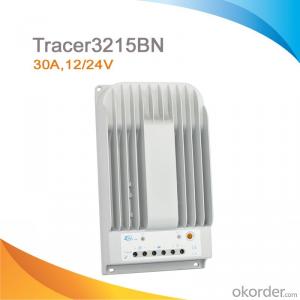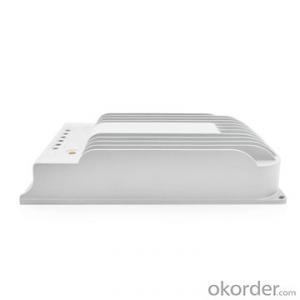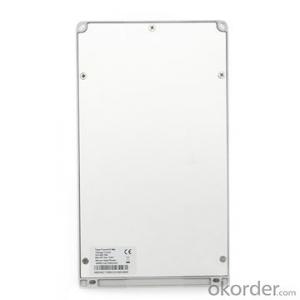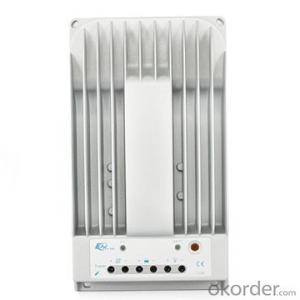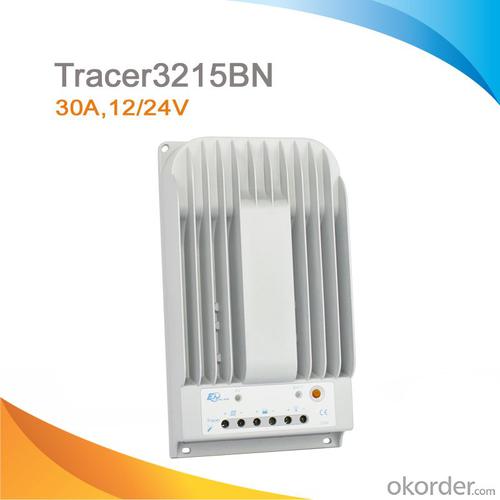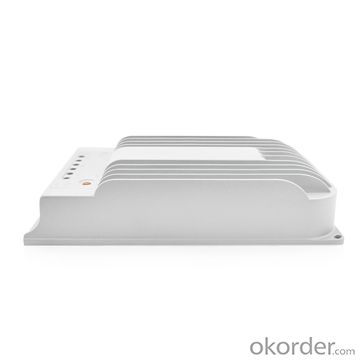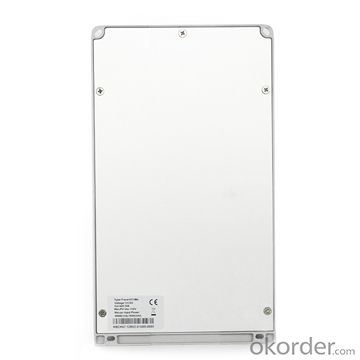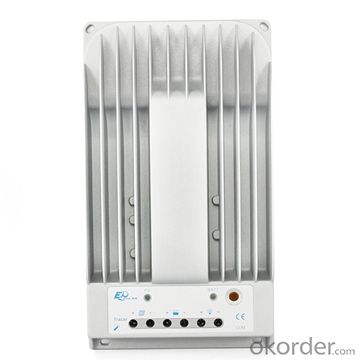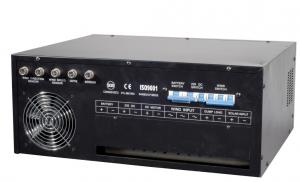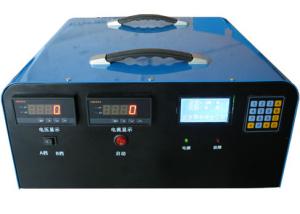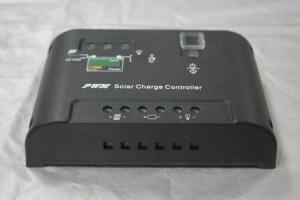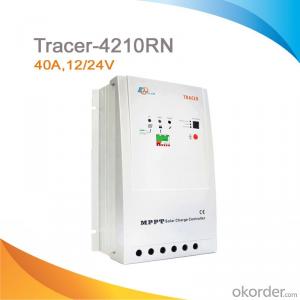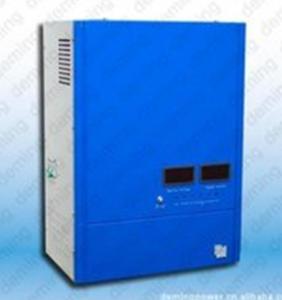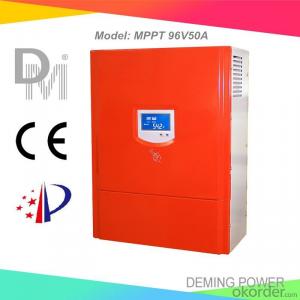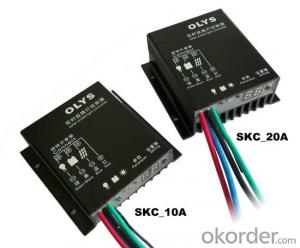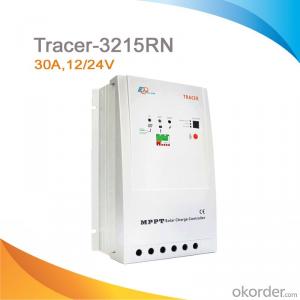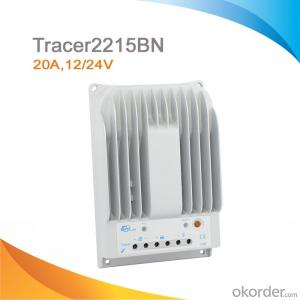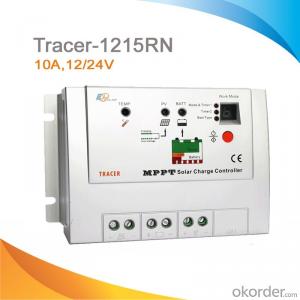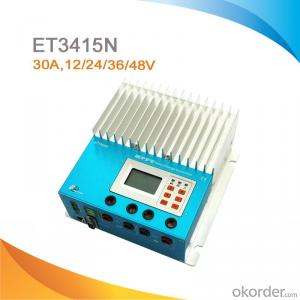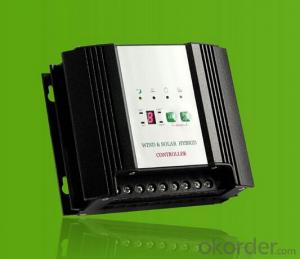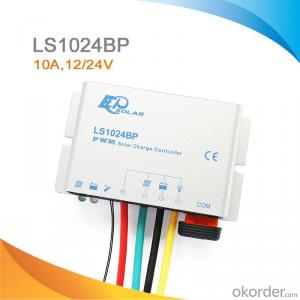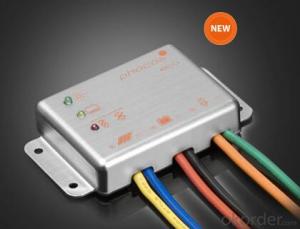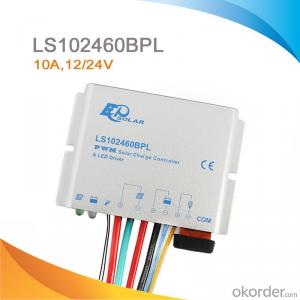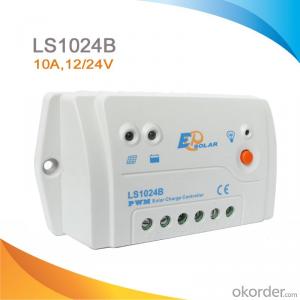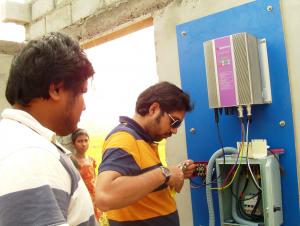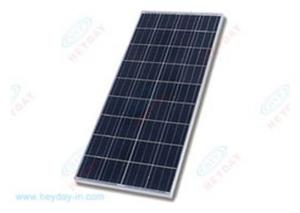Y Solar Charge Controllers MPPT Solar Charge Controller 30A, 12/24V, Tracer3215BN
OKorder Service Pledge
OKorder Financial Service
You Might Also Like
Descriptions:
A charge controller, or charge regulator is basically a voltage and/or current regulator to keep batteries from overcharging. It regulates the voltage and current coming from the solar panels going to the battery. Most "12 volt" panels put out about 16 to 20 volts, so if there is no regulation the batteries will be damaged from overcharging. Most batteries need around 14 to 14.5 volts to get fully charged.
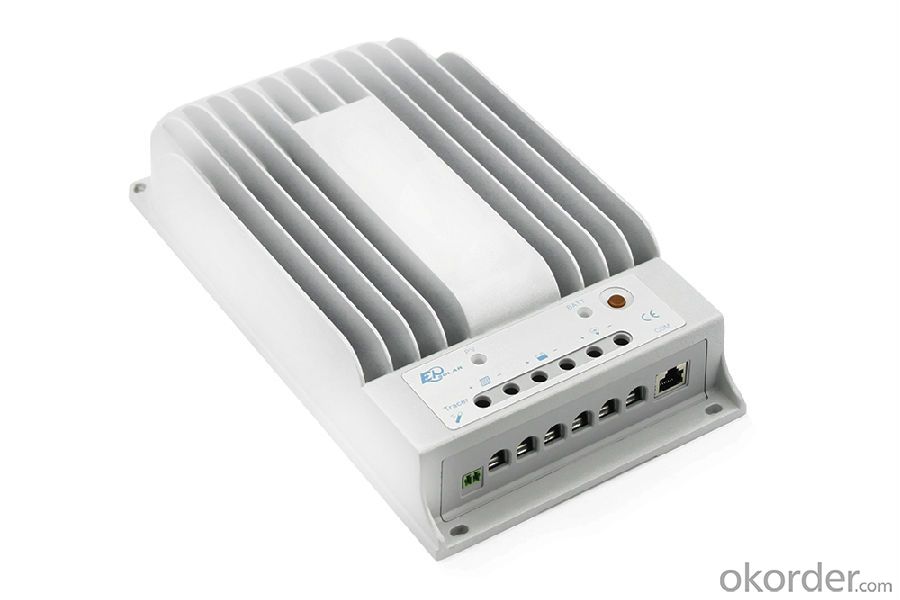
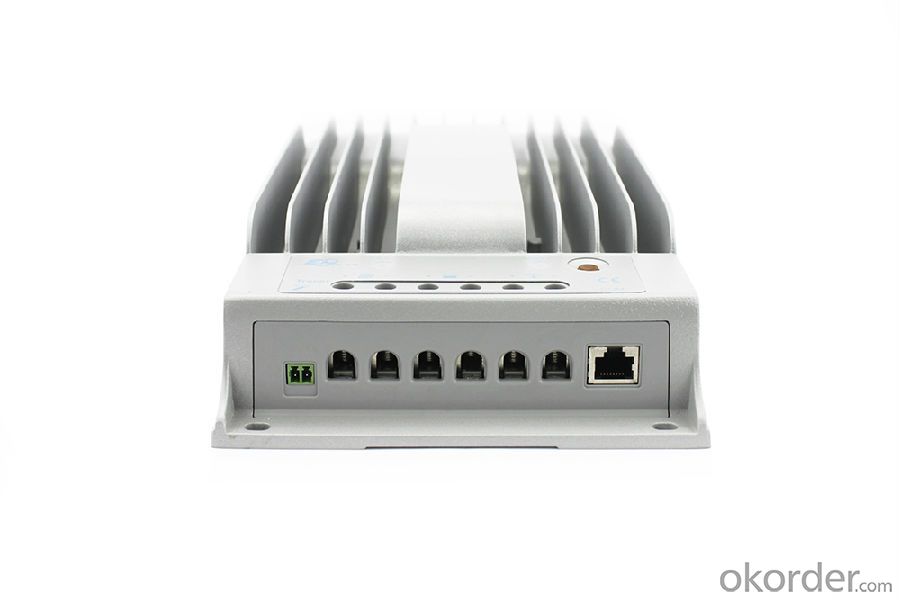
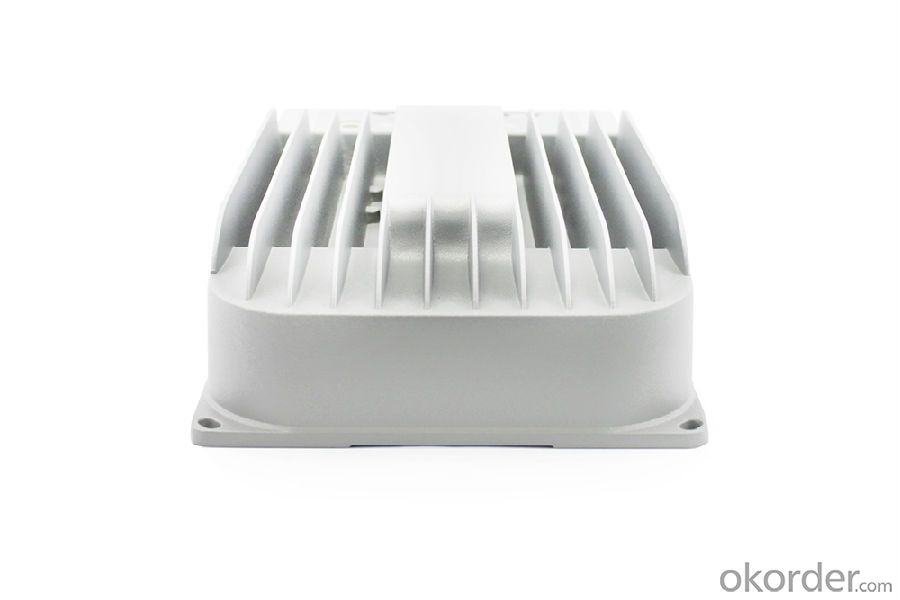
Specifications
10a,20a,30a,40a,12/24v auto work
Die-cast aluminum design
RS485 ports with MODBUS communication
option monitoring software
Features:
·Innovative MPPT technology
·Peak conversion efficiency of 98%
·High tracking efficiency up to 99%
·Several seconds tracking speed
·Die-cast aluminum design and nature cooling
·Temperature compensation
·Diversified load control to meet different requirements
·Four battery type options: Sealed, Gel, Flooded, and USER
·Intelligent lighting and timer control for solar lighting system
·Energy statistics function
·RS485 ports with MODBUS communication protocol
·Optional PC monitoring software and remote meter for real-time monitoring and battery management parameter setting
·Field upgradable firmware
Electronic Protections:
·PV short circuit protection
·PV overvoltage alarm protection
·PV current limiting protection
·PV reverse polarity protection
·Battery overcharge protection
·Battery over discharge protection
·Battery reverse polarity protection
·Load overload protection
·Load short circuit protection
·Overheating protection
Model | Tracer3215BN |
Nominal system voltage | 12/24V auto work |
Rated battery current | 30A |
Rated load current | 20A |
Max. PV open circuit voltage | 150V |
Max. battery voltage | 32V |
Max. PV input power | 390W (12V) |
780W (24V) | |
Equalize charging voltage | Sealed: 14.6V, Flooded: 14.8V, USER: 9~17V |
Boost charging voltage | Gel: 14.2V, Sealed: 14.4V, Flooded: 14.6V, USER: 9~17V |
Float charging voltage | Gel /Sealed /Flooded: 13.8V, USER: 9~17V |
Low voltage reconnect voltage | Gel /Sealed /Flooded: 12.6V, USER: 9~17V |
Low voltage disconnect voltage | Gel /Sealed /Flooded: 11.1V, USER: 9~17V |
Self-consumption | ≤50mA(12V) ≤27mA(24V) |
Grounding | Common negative |
Temp. compensation | -3mV/℃/2V |
Communication Port | RS485 / RJ45 interface |
Working temperature | -35℃~+55℃ |
Storage temperature | -35℃~+80℃ |
Humidity | ≤95% N.C. |
Enclosure | IP30 |
Overall dimension | 281x160x60mm |
Terminal | 16mm2 |
Net weight | 2.3kg |
- Q: What is the purpose of the battery low voltage disconnect feature on a solar controller?
- The battery low voltage disconnect feature on a solar controller serves the purpose of safeguarding the batteries against complete discharge. When the battery voltage falls below a specific threshold, typically around 11.5 volts, the disconnect feature automatically halts the power supply from the solar panels to the batteries. This measure effectively prevents excessive discharge, which could result in irreversible harm to the batteries and drastically reduce their lifespan. By disconnecting the solar panels during periods of low battery voltage, this feature guarantees that a minimum charge level is consistently maintained in the batteries. This aspect holds particular significance in off-grid solar systems, where the batteries serve as the primary power source during times of limited or no sunlight. Without the low voltage disconnect, the batteries could be completely drained to a point where recharging them effectively becomes impossible, leaving the system without power until the batteries are replaced. Furthermore, the low voltage disconnect feature not only safeguards the batteries but also helps protect other system components, such as inverters and charge controllers, from potential damage due to low voltage conditions. By interrupting the power flow when the voltage drops too low, it acts as a preventive measure against possible malfunctions and failures in the system. Overall, the objective of the battery low voltage disconnect feature on a solar controller is to ensure the batteries' longevity and optimal performance, while simultaneously shielding the entire solar system from potential damage and operational issues caused by low voltage conditions.
- Q: What is the maximum cable size that can be used between the solar panels and the solar controller?
- The maximum cable size that can be used between the solar panels and the solar controller depends on various factors such as the distance between the panels and the controller, the current carrying capacity of the cable, and the voltage drop allowed. It is advisable to consult the manufacturer's specifications or a professional installer to determine the appropriate cable size for optimal performance and safety.
- Q: How does a solar controller handle battery overvoltage disconnect recovery?
- A solar controller typically handles battery overvoltage disconnect recovery by automatically reducing or stopping the charging process when the battery voltage exceeds a predetermined threshold. This helps prevent any further overcharging or damage to the battery. Once the battery voltage drops back to a safe level, the solar controller resumes the charging process to maintain the battery's optimal charge.
- Q: How does a solar controller handle the monitoring of system performance?
- A solar controller handles the monitoring of system performance by continuously measuring the voltage and current output of the solar panels and comparing it with the expected values. It keeps track of the energy generated and consumed, battery status, and other relevant parameters. Additionally, it may have built-in sensors to detect temperature, irradiance, and other environmental factors that can affect system performance. Based on this information, the solar controller can optimize the charging and discharging of the batteries, ensure the system operates within safe limits, and provide real-time feedback on the overall performance of the solar system.
- Q: Can a solar controller be used with solar panel bird deterrent systems?
- Certainly! Solar panel bird deterrent systems can indeed utilize a solar controller. This nifty device plays a vital role in managing and overseeing the electricity flow from the solar panels to the bird deterrent system. Its primary function lies in ensuring the batteries of the system are charged optimally by the solar panels, while also safeguarding against overcharging or battery damage. Consequently, the solar controller assumes a crucial role in guaranteeing the effective operation and durability of the solar panel bird deterrent system.
- Q: What is the maximum charging time a solar controller can handle?
- The maximum charging time a solar controller can handle depends on the specific model and its capabilities. Typically, solar controllers can handle charging for extended periods, ranging from several hours to even days, depending on the capacity and design of the controller.
- Q: Can a solar controller be used with solar panel ground screws?
- Yes, a solar controller can be used with solar panel ground screws. A solar controller is responsible for regulating the amount of electricity flowing from the solar panels to the batteries. The use of ground screws to secure the solar panels does not affect the compatibility or functionality of the solar controller.
- Q: How do I calculate the size of a solar controller for my system?
- To calculate the size of a solar controller for your system, you need to consider the maximum current and voltage requirements of your solar panels. The solar controller's amp rating should be equal to or higher than the maximum current output of your panels. Additionally, ensure that the voltage rating of the controller matches the voltage of your panels. It is always recommended to consult the manufacturer's specifications and guidelines to ensure compatibility and optimal performance.
- Q: What is the maximum load capacity of a solar controller?
- The maximum load capacity of a solar controller typically varies depending on the specific model and brand. However, in general, solar controllers are capable of handling load capacities ranging from a few hundred watts to several kilowatts. It is essential to refer to the manufacturer's specifications and guidelines to determine the exact maximum load capacity of a particular solar controller.
- Q: How does a solar controller handle temperature fluctuations in the environment?
- A solar controller handles temperature fluctuations in the environment by using temperature sensors to monitor the temperature of the solar panels. It adjusts the charging and discharging rate of the batteries based on the temperature readings, ensuring optimal performance and preventing damage to the batteries. Additionally, some advanced solar controllers have temperature compensation features that automatically adjust the charging voltage to compensate for temperature changes, further improving the efficiency and lifespan of the system.
Send your message to us
Y Solar Charge Controllers MPPT Solar Charge Controller 30A, 12/24V, Tracer3215BN
OKorder Service Pledge
OKorder Financial Service
Similar products
Hot products
Hot Searches
Related keywords
